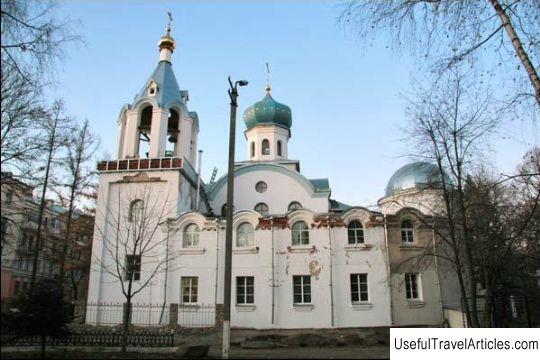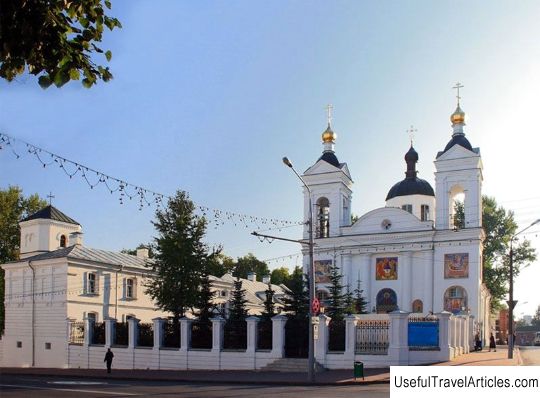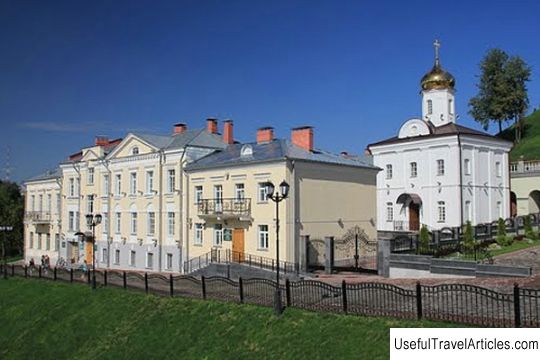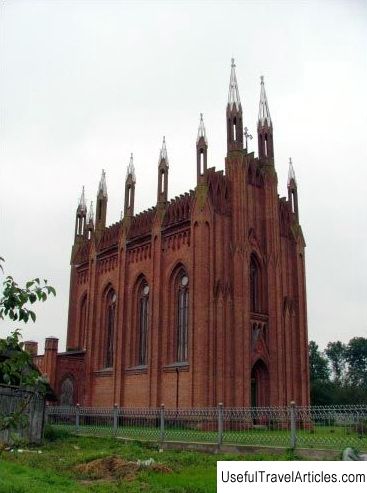Holy Assumption Cathedral description and photo - Belarus: Vitebsk
Rating: 8,5/10 (5786 votes) 
Holy Assumption Cathedral description and photos - Belarus: Vitebsk. Detailed information about the attraction. Description, photos and a map showing the nearest significant objects. Photo and descriptionVitebsk Holy Assumption Cathedral is a temple that was destroyed and rebuilt 12 times. The hill on which the cathedral now stands has been known since ancient times. Once upon a time there was a pagan temple on the hill, later the abandoned sanctuary of the old gods began to enjoy unkind fame, for which it was nicknamed Bald Mountain. The Orthodox priests who came to Vitebsk decided to build the Church of the Most Holy Theotokos on the site of the former temple, which they successfully carried out. Already in 1406, there is a mention of an Orthodox church standing on Prechistenskaya Gora (that's how they began to call Bald Gora). At the beginning of the 15th century, a new stone cathedral church of the Assumption of the Blessed Virgin Mary was rebuilt on the site of the destroyed wooden church, at which the archbishop's courtyard was located, and the hill began to be called the Assumption Mountain. In 1619, the Uniates took away the Assumption Church. Near it, Archbishop Josaphat Kuntsevich made his residence, advocating the conversion of all the lands of the Grand Duchy of Lithuania to Catholicism. It was here, in the residence of Josaphat Kuntsevich on the Assumption (Lysaya) Mountain, that the memorable murder of the Uniate Archbishop took place, after which his body was thrown from the mountain into the river. The temple, hated by Orthodox Christians, was ravaged by the rebels, and then it was dismantled and rebuilt by the rebels by court order. In 1629, a fire broke out. In 1636, a temple was rebuilt on the site of the burnt church. For some reason, this temple quickly decayed, and in 1682 a new temple and a Basilian monastery were built in its place. In 1708, Tsar Peter I ordered to burn Vitebsk, and with it the Basilian monastery. The hastily rebuilt church at the new Basilian monastery was too cramped. In 1715, it was dismantled, and in its place, at the expense of the tradesman Myron Galuso, he built a more spacious church for the monastery. In 1722, during a fire, the Basilian monastery burned down, and with it the church. For 20 years, the Assumption Mountain was empty. We again remembered its former name Bald Mountain and again unkind rumors spread about this place. In 1743, it was decided to rebuild the Basilian monastery and the stone church in the same place. In 1799, a large and beautiful stone Basilian church was transferred to Orthodox Christians, who rebuilt and decorated it in their own way. The French did not bypass the new cathedral in 1812. They liked the building above the confluence of the Vitba and Western Dvina rivers, and they set up an infirmary in the temple, at the same time thoroughly robbing it and destroying the interior decoration. The temple has been rebuilt. In 1831, the funeral service for Grand Duke Konstantin Pavlovich, who had died of cholera, was buried there. After the arrival of the Bolsheviks in Vitebsk, it was decided to immediately demolish the Assumption Church. It was blown up in 1936. After the Great Patriotic War, a machine-tool plant was built on the Assumption Hill. In the 1980s, the apparently unprofitable plant was abandoned. For many years, the most terrible urban legends circulated about this place. On September 26, 1998, a solemn ceremony took place, at which Patriarch of Moscow and All Russia Alexy II laid the first stone of the church with a commemorative letter for posterity. Archaeological finds discovered during the construction of the temple, shocked the builders: hundreds of human remains were found on the site of the former monastery cellars. However, despite the terrible find, construction continued, and the found human bones were buried near the temple after its consecration in 2005. Remembering the history of the previous churches, priests were literally on duty at the construction, each stage of construction was consecrated and given a blessing. The fully built, finished and decorated Assumption Cathedral was opened to parishioners on April 7, 2011.         We also recommend reading Dzhanbulat Museum (Canbulat Muzesi) description and photos - Northern Cyprus: Famagusta Topic: Holy Assumption Cathedral description and photo - Belarus: Vitebsk. |




